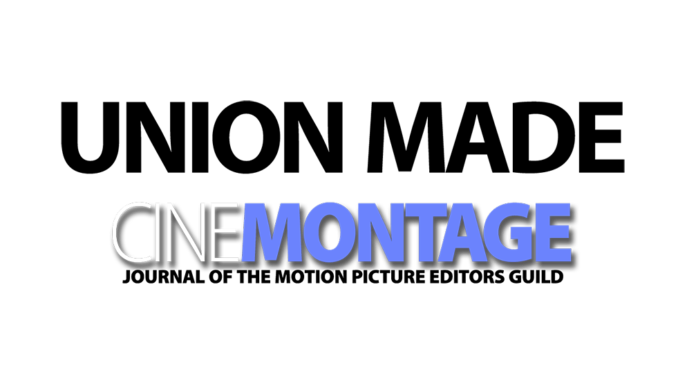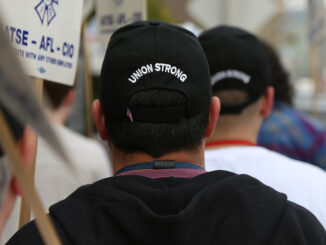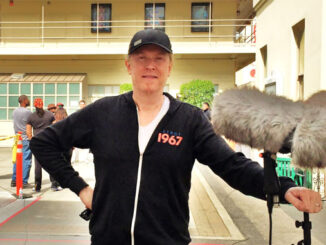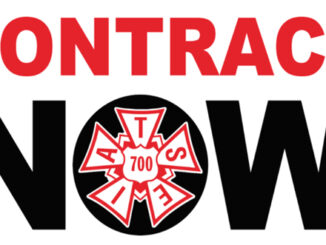
by James Ashwill
Working on movies in Hollywood was the furthest thing from my mind as I grew up in Topeka, Kansas. I did, however, have an interest in sound recording — especially the technical side. As a kid, I remember saving my money to buy an old portable tape recorder, then teaching myself to thread it and clean the tape path with a cue tip and alcohol. I’d record my friends telling jokes, and then we’d spend hours laughing at the way our voices sounded on tape. After graduating high school in 1970, I worked at several jobs that paid the bills — but none were what I wanted to do for the rest of my life. In 1974, two of my cousins drove into town with a moving van filled with instruments and sound equipment. They were musicians and had bought a mixing console to be operated away from the stage by a sound mixer for amore balanced, professional sound. Knowing that I was unhappy with my apartment maintenance job, they invited me to travel with them as their soundman. There was no pay, but they thought I might go for it. They were right; I accepted!
While they performed in multiple states, I learned to set up the equipment and operate the soundboard…by trial and error. And when I say “error,” I mean loud, screeching feedback or a voice or instrument buried in the mix. A few of those mistakes — with the band glaring at me and the audience covering its ears in pain — and I learned pretty quickly!
I also learned that every nightclub sounded different with people in it and had different acoustics. I was lucky enough to meet John Moseley, a fantastic keyboard player and studio owner in Kansas City who taught me which microphones to use and how to mic the instruments better. By 1976, the band moved to Los Angeles hoping to get a record deal. We turned our garage into a crude recording studio, hanging carpets on the walls and ceiling, and set up our stage equipment. I learned about overdubbing and some of the ins and outs of putting sound to tape using a Teac 4-track tape recorder. After I taught myself all I could, I heard about Dick Grove’s Music Workshop, a record engineering school, and enrolled. The school refined my self-taught techniques and exposed me to a real recording studio — albeit a small one with old, outdated equipment.
In 1979, my cousins got hired as a back-up band to record at the original One Step Up recording studio, where The Eagles were working on The Long Run album. I was very excited to see this professional studio and now knew what I wanted to do for a career!
The chief engineer was a grouchy but brilliant man named Ed Bannon. Once he figured out he couldn’t scare me off, I made him coffee, wound cables, put away microphones and swept the floors. I also learned to align the 24-track recorder, operate the console and, under Bannon’s watchful eye, record like a pro. I was promoted to second engineer and started earning five to seven bucks an hour; I was a pro.
Two years later, the studio was purchased; I was kept on for my knowledge of the equipment and retrained to learn something I’d never heard of: Foley! We were recording doors slamming, cups being picked up and set down, fists hitting faces, footsteps — basically any sound not picked up by the production mics (which prioritize dialogue only) or that needed to be added for dramatic effect.
I learned that every nightclub sounded different with people in it and had different acoustics. I was lucky enough to meet John Moseley, a fantastic keyboard player and studio owner in Kansas City who taught me which microphones to use and how to mic the instruments better.
It was during this time in 1982 that I was able to join IATSE union as a Y9 recordist. Instead of music producers, I worked with sound editors and as an engineer, I learned to use new equipment: videotape players and synchronizers locked to the recorder. Eventually, I was bumped up to a Y1 mixer specializing in Foley. Of the films I’ve worked on over the years, Waterworld stands out, because we set up a full-size, above-ground swimming pool on the Foley stage! Foley artists, including Dan O’Connell, spent weeks splashing and swimming around. Sometimes the microphone would “drown” and fizzle out. We would wrap a Lavalier mic in a condom and then dunk it in water for special underwater sounds.
Pirates of the Caribbean presented other unique Foley challenges. Footsteps had to sound like they were on old wooden ships with big groans and creaks. There were sounds of creatures with barnacles or squid tentacles and cannons firing loads of chains or silverware — always something new and challenging to record.
I have been a union Foley mixer now for well over 30 years and have had the honor of working on over 350 feature films — each still fun and challenging. I’ve had a great time and I’m proud to be union made.





